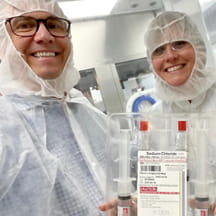Perspectives in pain management
In this series, Children's Hospitals Today explores balancing the use of opioids to ensure children's hospitals can adequately treat pain in children.
- Balancing pediatric patient care and effective pain management
- Rethinking children's pain management in the opioid crisis
- 5 considerations for children's hospitals pain management practices
- How children's hospitals are confronting the opioid crisis
- Minimizing opioid misuse in adults and treating pain in children
While many people equate opioid addiction with pain treatment, Gary Walco, Ph.D., ABPP, director of pain medicine at Seattle Children's Hospital, says they are separate—although related—issues. For children undergoing invasive procedures, opioids are typically used only for a limited time.
"When you have pain, you deserve to have your pain alleviated to the degree reasonable," Walco says. "Most of what we're talking about in children's hospitals is responsible acute pain treatment, which includes being mindful of appropriate prescribing, providing only what is necessary to deal with the immediate, acute situation."
There are two distinct terms regarding opioid use, and they require different approaches.
- Substance use disorder: The American Psychiatric Association defines a substance use disorder as an intense focus on using a certain substance to the point that it takes over a person's life.
- Opioid misuse: Walco says this is defined generally as taking a drug any way other than how it is prescribed by a physician.
An example of opioid misuse is if a patient is instructed to take one tablet every four to six hours for pain and it doesn't work, and then he or she takes two tablets in a six-hour period for the pain. It could also be a teenager taking one pill from the family's medicine cabinet to try it. Walco says the issue is when people think examples like these are abuse.
"We don't want to confuse a one-time experimentation or situation with substance use disorder," Walco says. "Some people worry any misuse is setting youth up to become opioid addicts. But there are typically other significant factors that contribute to developing the disorder."
What it all means in pediatrics
A 2017 Journal of Pain article Walco authored indicates that in pediatrics, opioids are prescribed for short-term acute pain problems. Long-term use is rare, and mostly seen in oncology and critical care settings. The patterns of utilization indicate that opioid administration among pediatric inpatients for this kind of pain management is not a likely contributory factor to concerns about opioid misuse in the U.S.
Walco says there here's no disputing an opioid issue exists. But the real problem doesn't necessarily start with opioids given in the inpatient setting, particularly in children's hospitals. Instead, he says excessive prescribing or failure to discard unused medications lead to a reservoir of opioids sitting in home medicine cabinets.
It doesn't matter if those opioids are prescribed to adults or children. Ultimately, these pills are easily accessible and pose a risk, says Walco. "No one is looking to undertreat pain in children and we also recognize there's a big problem with opioids. The goal is to strike a balance, so we can adequately treat pain in children."


